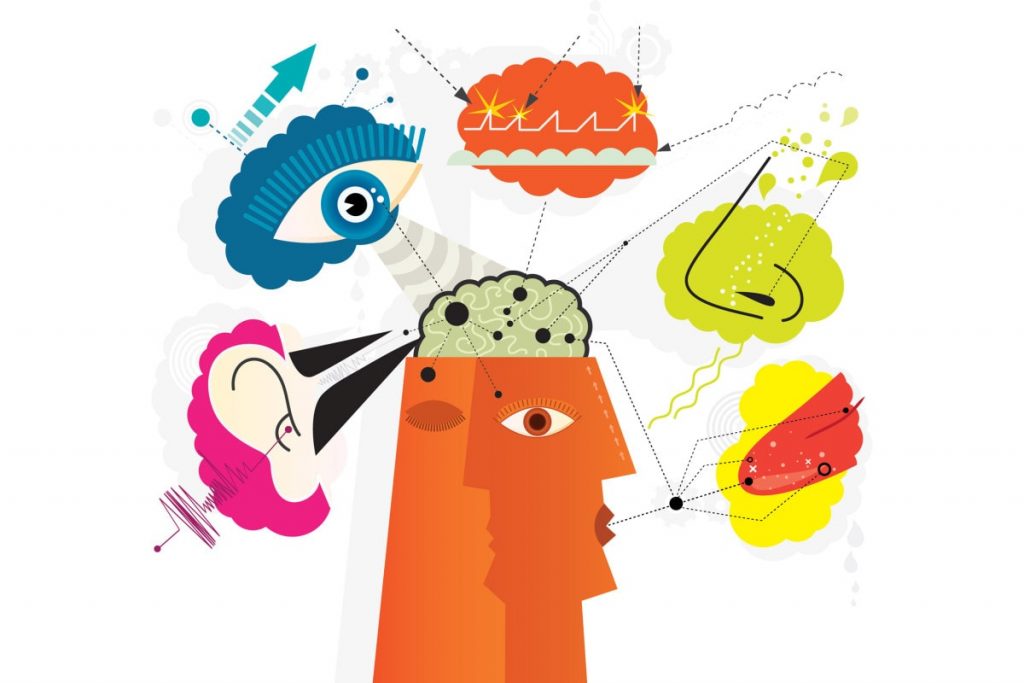Ever imagined about the existence of living entities with absolutely no traces of any sensory organs? No eyes to see the world around, nose to smell your surroundings, no sense of touch, ears to hear/listen? Life is next to impossible without these structures, and they are critical for survival.
Sense organs are the organs or structures of the body which enable humans to smell, hear, view, taste and feel their surroundings. Animals possess five standard sense organs; they are:
- Eyes: They are the organs of the visual system and provide vision – the ability to collect and process visual details
- Ears: They are the organs of hearing. It also provides a sense of balance.
- Nose: These organs are related to the olfaction and provide a sense of smell. They also serve as a primary organ for the respiratory system of the body, where the inhaling and exhaling action of respiratory gases occur
- Tongue: One of the strongest muscles of the body, the tongue is located in the mouth. It manipulates food for mastication and possesses thousands of taste buds that provide the entity with a sense of taste
- Skin: The largest sense organ in the body, skin provides a sense of touch/feel.
How Are Sense Organs Able To Do What They Do?
Sense organs have specialized receptors with the help of which they perform their corresponding functions. General receptors are present all through the body. They are located on the skin, the visceral structures, joints and muscles.
Chemical receptors or chemoreceptors are the special receptors that are observed in the nose and mouth, whereas light receptors or photoreceptors are found in the eyes and mechanoreceptors are found in the ears.
Significance Of Sense Organs
Our body is a family of organs, all of which communicate to aid survival. Sense organs are important because of the following reasons:
1. First and foremost are the eyes.
These structures are the most highly developed sense organs, and a larger part of the brain is dedicated to vision. The chief function of the eye is the conversion of the light energy received from the outside into electrical nerve impulses, which are further transported to the brain for processing. Eyes are vital; without these structures, life can be incomprehensible.
2. Power of touch.
Feeling things around you, being sensitive to touch is a boon we often tend to acknowledge less. The sense is felt as fibres send across signals to the brain, thereby rendering a sensation. Paralysis is a condition of insensibility, wherein touch either partially or impartially cannot be sensed.
3. Next up is hearing.
Hearing or auditory perception recognises sound by detecting vibrations received by the external pinna. Hearing is a crucial part of communication in today’s world.
4. Olfaction to the rescue
The nose performs a multitude of functions. It not only senses smell/fragrance but also is the chief organ of the respiratory system wherein respiratory gases are exchanged to reach the inner respiratory structures. Apart from that, it also regulates the temperature of the air we breathe.
For more information on related topics such as characteristics of living organisms, the function of heart, parts of the brain, please subscribe to BYJU’S YouTube Channel.
Video @ https://www.youtube.com/embed/I8so_dpVsus
More Related Posts By Byjus
- How To Gamify your Studies for Better Result
- What is Buffer Capacity and Solution
- What is Algebra?
- Six Tricks to Make Math Fun and Easy


